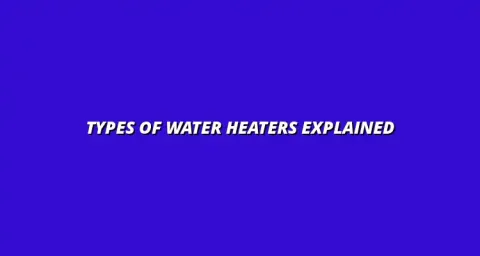
- Plumbing Basics
- Jan 23
2025-01-18
Have you ever walked into the bathroom and heard that constant sound of water running? If so, you may be dealing with a running toilet. This common household issue can be annoying and, if not addressed, can lead to higher water bills and potential plumbing problems down the line. Understanding the causes is the first step to getting it fixed! For a quick guide on how to fix this common problem, check out this helpful guide on fixing a running toilet easily.
Typically, a running toilet occurs due to a malfunction in one or more components inside the tank. These components work together to control how water fills and empties from the toilet bowl. By identifying the symptoms early, you can address them quickly, saving both water and money!
Before jumping into repairs, it’s important to recognize the symptoms of a running toilet. Being aware of these indicators will make it easier for you to diagnose the problem. Some common symptoms include:
A major symptom of a running toilet is a continuous flow of water. This happens when the flapper, which seals the toilet tank, doesn’t close properly. It can cause water to leak into the bowl, wasting gallons of water every day!
If left unchecked, this issue can not only lead to increased water bills but also cause damage to your toilet's internal components. It’s crucial to address this symptom promptly to avoid further complications.
Another telltale sign of a running toilet is unusual noises from the toilet tank. You might hear a hissing sound, which usually indicates that the fill valve is malfunctioning. This sound can be quite annoying and might keep you awake at night!
Additionally, gurgling or bubbling noises can signify a clogged drain line or an issue with the venting system. If you're dealing with a clogged toilet, this guide on fixing a clogged toilet can help. If you hear these sounds, it’s best to investigate further to prevent any serious plumbing issues from arising.
Understanding the essential plumbing components of your toilet will empower you to tackle repairs confidently. Knowing how these parts function can help you identify problems and apply effective solutions. For more easy plumbing repairs, check out this guide for easy plumbing repairs for homeowners.
Let’s dive into the main components of a toilet and their significance in keeping everything running smoothly!
To effectively fix a running toilet, you should familiarize yourself with its basic components. Here are the most critical parts you need to know:
The flapper is a vital component that seals the toilet tank after flushing. When you press the handle, it lifts, allowing water to flow into the bowl. If the flapper is worn out or misaligned, it can cause a constant leak, leading to a running toilet!
Regularly checking and replacing the flapper, if necessary, can prevent unnecessary water waste. Remember, this small part plays a significant role in your toilet’s efficiency!
Fill valves are essential for refilling the toilet tank after each flush. They allow water in and stop when the tank is full, thanks to the float. If the fill valve is malfunctioning, it may not shut off correctly, causing water to flow continuously.
Knowing how to adjust or replace your fill valve can save you from the hassle of a running toilet. It’s one of the primary areas to inspect when diagnosing toilet issues!
Before diving into any repairs, it’s essential to gather the right tools and materials. Having everything on hand ensures a smoother repair process. Here are some tools I recommend:
When tackling DIY plumbing repairs, the right tools are a must! Here’s a quick list of essential tools you should have:
These tools will make your repair tasks much easier and more efficient!
Having the right replacement parts on hand can save you time and frustration during repairs. Here are some commonly needed parts you might consider keeping in stock:
By having these parts available, you can quickly address any issues that arise, ensuring your toilet functions properly for years to come!
Many homeowners have questions about running toilets, especially regarding their impact on water usage and costs. Understanding these common inquiries can help you make informed decisions for your home. Let's dive into some of the most frequently asked questions!
One of the primary concerns with a running toilet is the significant amount of water it wastes. Over time, this can lead to higher water bills that can strain your budget. It's essential to be aware of just how much water a running toilet can use — estimates suggest it could waste up to 200 gallons of water daily!
Neglecting the issue can lead to even bigger problems. Over time, a running toilet can cause damage to your plumbing system and create a perfect environment for mold and mildew growth. Addressing the issue promptly is key to avoiding these long-term effects!
Water waste is not just an environmental concern; it can also cause noticeable changes in your monthly expenses. When you have a running toilet, the water bill can skyrocket without you even realizing it! Keeping an eye on your utility bill can help you catch these issues early.
Moreover, the impact on the environment shouldn't be overlooked. Wasting water contributes to shortages and affects overall water conservation efforts in your community. Fixing a running toilet is a simple yet effective way to help our planet!
If a running toilet is ignored for too long, it can lead to more serious plumbing problems. For example, constant water pressure can cause wear and tear on pipes, leading to leaks and costly repairs. Addressing the issue quickly can prevent these bigger headaches in the future. If you're experiencing low water pressure in your kitchen sink, you might find this guide on fixing kitchen sink water pressure helpful.
Additionally, problems like sediment buildup can occur if the toilet is continually running. This can lead to clogs or reduced efficiency, necessitating further repairs down the line. Staying proactive can save you time and money!
While many issues can be resolved with some DIY effort, there are times when calling a professional plumber is necessary. If the problem persists after you've attempted repairs, it may indicate underlying plumbing issues. It's essential to recognize when to seek professional help. For example, if you need a plumber in Billesley, Birmingham, you can find one here.
Signs of more serious plumbing problems can include persistent leaks, water pooling around the base of the toilet, or if the running continues even after replacing components like the flapper. These signs can indicate that something more complex is at play!
Recognizing when a plumbing issue goes beyond a simple fix is crucial. Signs like fluctuating water levels in the tank, strange noises, or even water pressure changes can signal underlying problems. If you notice these, it might be time to seek help! For tips on fixing low water pressure in your water heater, see this guide.
Additionally, if you find yourself making frequent repairs, consider calling a professional. Sometimes, persistent issues can indicate that it's time for a thorough inspection of your plumbing system. Investing in a professional evaluation can save you trouble in the long run!
Before deciding whether to tackle a plumbing issue yourself or hire a professional, it's essential to weigh the costs. DIY repairs can save money, but they also require time and a certain skill level. For minor issues, I often recommend trying some basic fixes first! This guide on fixing a running toilet easily can help you assess whether you can handle the repair yourself.
However, if you find that repairs become complicated or you're unsure of how to proceed, hiring a professional could be the best route. Evaluating your comfort level with plumbing tasks, alongside the cost of potential damage from neglect, will help you make the right decision!
Once you’ve dealt with a running toilet, it’s important to focus on maintenance to prevent future problems. Routine upkeep can help extend the life of your toilet and keep it running smoothly. A little prevention goes a long way!
One of the best ways to prevent a running toilet is through regular maintenance. Simple checks can help you catch problems before they get out of hand. I recommend establishing a routine, perhaps every few months, to inspect your toilet and its components!
By making it a habit to check your toilet components, you can catch minor issues before they become major headaches. Look for signs of wear and tear on the flapper, fill valve, and other parts. Keeping an eye on these elements can save you time and money down the line!
In addition to visual checks, consider listening for unusual sounds. If your toilet makes strange noises, it might be a sign that something needs attention. Early detection will allow you to address issues before they impact your home!
When it comes to cleaning your toilet, it’s essential to choose agents that promote overall toilet health. Some harsh chemicals can damage components over time, leading to future problems. Opting for natural or gentle cleaners can help maintain your toilet’s longevity!
Regular cleaning not only keeps the toilet looking good but also helps to prevent buildup that could cause clogs or other issues. A clean toilet is a happy toilet, and it’s a good practice to incorporate into your routine!
Repairing a running toilet and maintaining its integrity is an important part of homeownership. By taking the time to learn a bit about plumbing basics, you can feel more confident tackling issues as they arise. Don’t hesitate to get your hands a little dirty — it can be rewarding!
Remember, understanding your toilet's components and their functions will empower you as a homeowner. With the right knowledge and tools, you can address minor issues and keep your toilet running smoothly for years to come!
DIY repairs can be daunting, but with practice, they become easier and more intuitive. Every successful repair builds confidence, allowing you to tackle more complex tasks in the future. So don’t be afraid to dive in — you might surprise yourself!
Plus, sharing your experiences with friends or family can help encourage them to try their hand at DIY repairs too. The more we learn together, the better equipped we are to handle home maintenance tasks!
In summary, understanding the basic components of your toilet and how to maintain them is crucial for preventing running toilets and other plumbing issues. With regular checks and a bit of effort, you can keep your toilet in great shape. Knowledge is power, so equip yourself to enjoy a smoothly running home!
